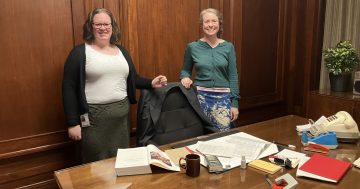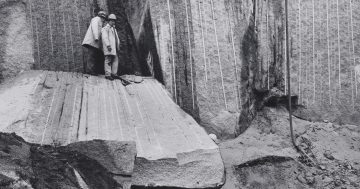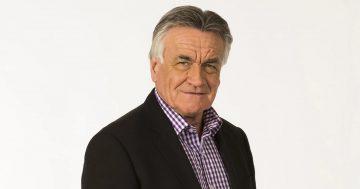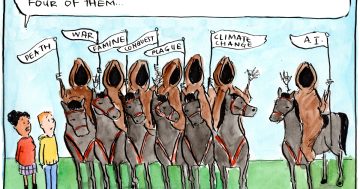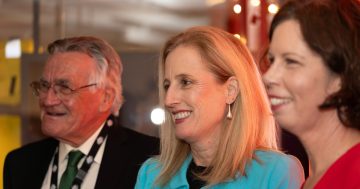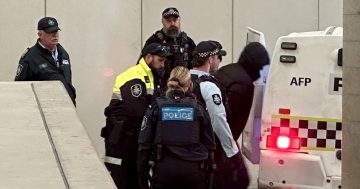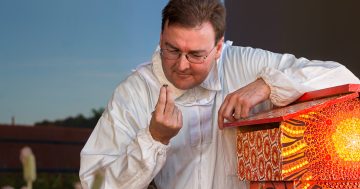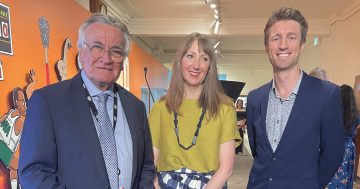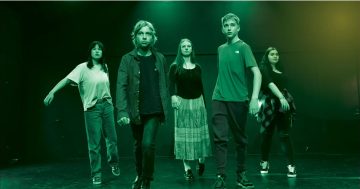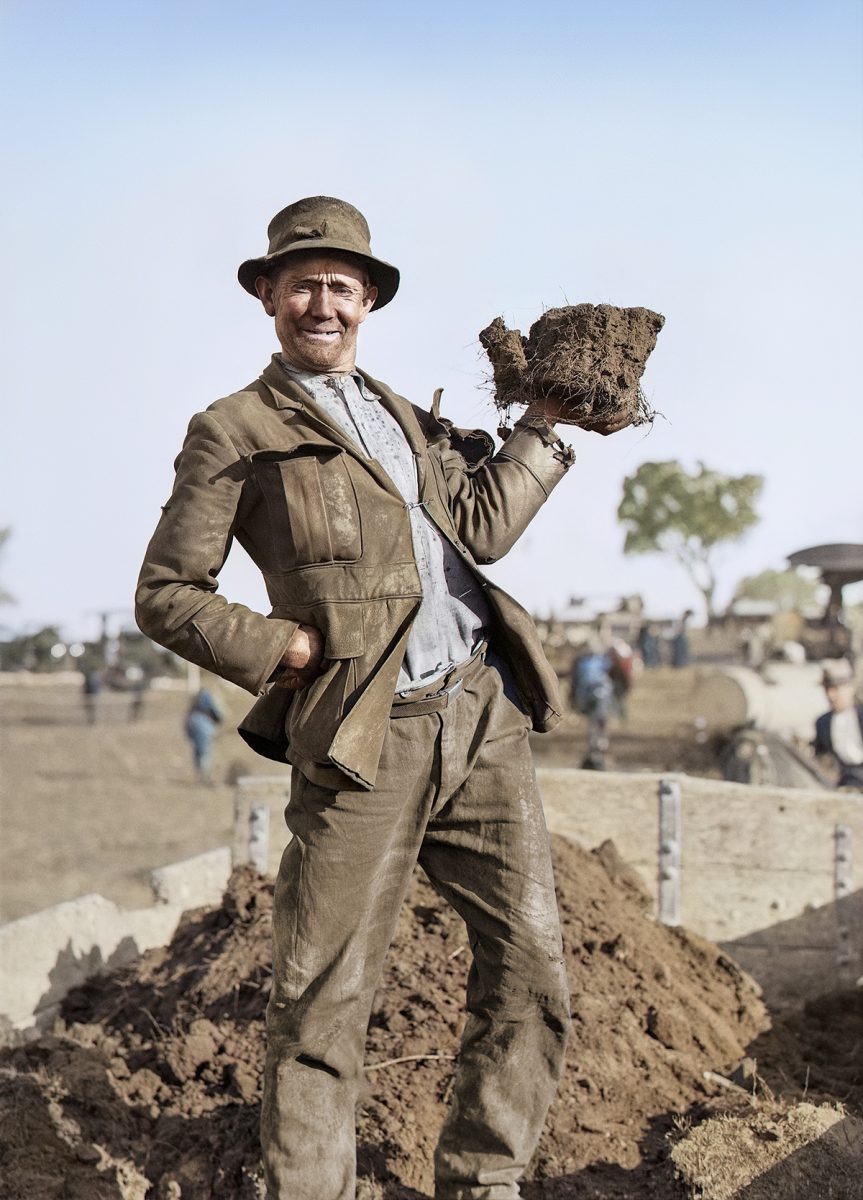
Do you know who this man is? He was photographed at the turning of the sod for Parliament House on August 28, 1923 – and looks to have taken more than a handful of souvenir soil home. Photo: National Library of Australia.
They came via horseback, bicycle, truck and car at 3 pm on 28 August, 1923, the day the first sod was turned to make a sheep paddock into the home of the nation’s capital.
Newspaper reports of the day tell us more people turned up than expected, numbering into the hundreds to see work start on our first Parliament House. In Queanbeyan, they even declared it a half-day holiday so people could come from over the border for a stickybeak.
To mark the 100th anniversary of the first sod being turned to build Parliament House, the Museum of Australian Democracy (MOAD) – as it is now known – has just opened the display, Breaking Ground.
Exhibition curator Alice McKenzie Ebbels said the display featured rare archival footage and recently colourised historical photographs to bring to life the moment construction began on our first Parliament House in Canberra.
Although construction was a long time coming, the speed by which it was built surprised everyone. Canberra was chosen in 1911 as the nation’s capital yet 12 years later, little had been done to make it happen.
Competition after competition was held, Ms McKenzie Ebbels said, until this work finally happened.
“The builders and the labourers worked so quickly they soon outpaced the architects who had to scramble to catch up,” she said. “There was such a tight turnaround between being signed off by Parliament and the actual construction, they didn’t have much time at all.
“It ended up taking them about three months from the decision to build to the turning of the first sod.
“They only passed approval to fund the building three days before they turned the first sod.”
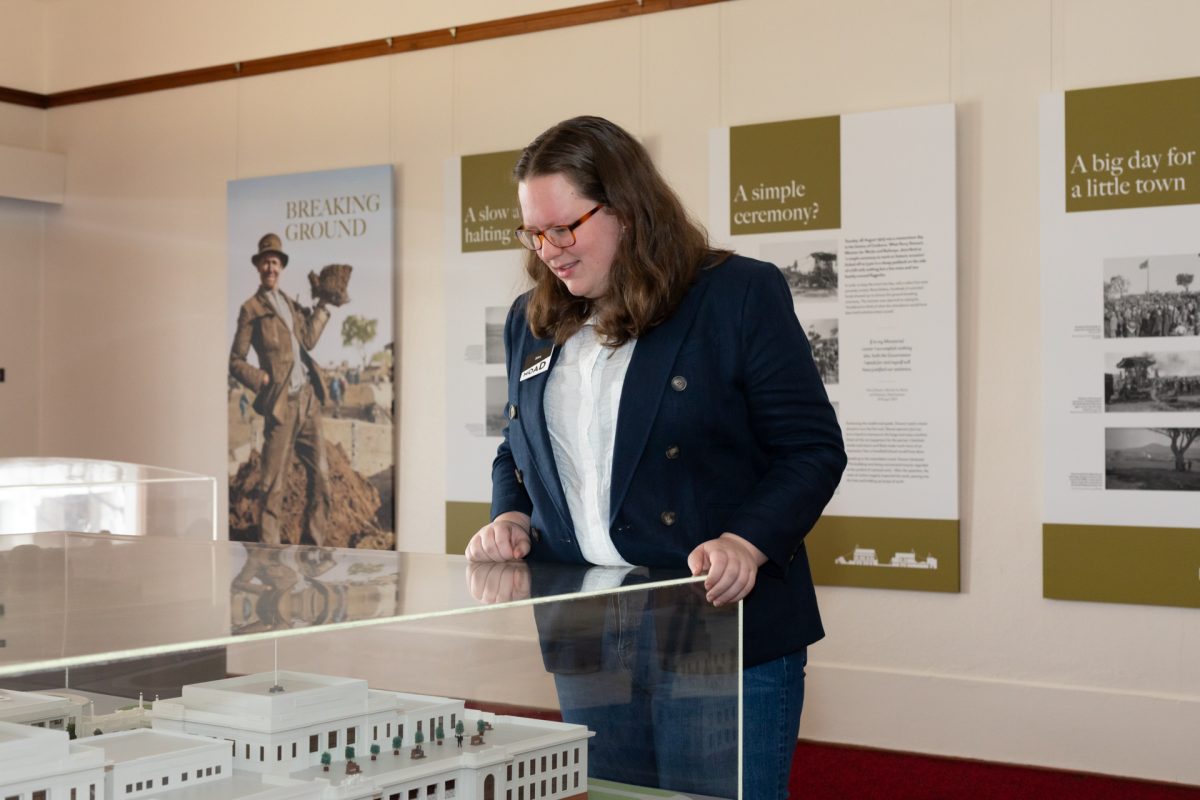
Alice McKenzie Ebbels, curator of the new display Breaking Ground, at the Museum of Australian Democracy. Photo: Michelle Kroll.
It was also significantly over budget – from an estimated £250,000 to £650,000.
The Breaking Ground display is the first such event in the lead-up to the museum’s 100th birthday on 9 May, 2027. Curators worked with other cultural organisations including the National Archives, the National Library and the National Film and Sound Archives to secure archival photographs and footage.
One of the key images on display is that of a man, sporting a big smile, who looks to be standing on the back of a truck holding a tray full of dirt.
“We don’t know who he is,” Ms McKenzie Ebbels said, “but we would love to. We think the photograph was taken by a reporter on the day. We’ve found one reference to him saying he was a worker from either Yass or Queanbeyan – but we would love to know for sure.
“We’ve had the image colourised too so people can connect with it more easily.
“It’s funny. Everyone who sees the image thinks they know him, even my mother said he looked liked her grandfather. It could well be that someone knows him considering the workforce was drawn mostly from the local area.”
(If you do know who he is, let us know and we’ll pass it on to the MOAD curators).
But not everyone was a fan of building this “temporary” Parliament House. Many thought the money would be better invested elsewhere because no state or territory should be seen as having too much influence over another.
Ms McKenzie Ebbels said the sod turn was quite a simple ceremony despite it being such an historic occasion.
“At 3 pm on Tuesday 28 August 1923, Federal Minister for Works and Railways Percy Stewart said a few words before a steam shovel belched to life like ‘an elephant, waving its trunk in the air until finally it dug its great teeth into the ground’ (as reported in The Argus the following day). Those assembled posed with clumps of earth, and history was made.
“This step would mark an almost four-year construction journey to finish one of Canberra’s first iconic sites,” she said. “The building would go on to house the government from 1927 to 1988 and become the backdrop to many important historical moments.
“We hope these images and the story of the early days of Canberra ignite the imagination of all Australians and inspire an interest in key moments in our democracy.”
Breaking Ground is on display in the Senate Government Party Room, Museum of Australian Democracy, 18 King George Terrace, Parkes, ACT. Free, open daily.












